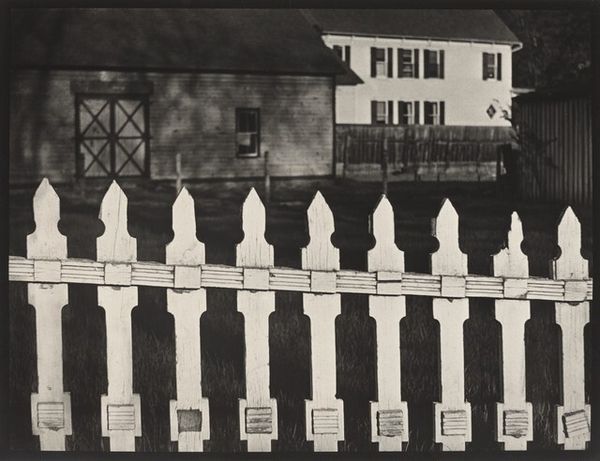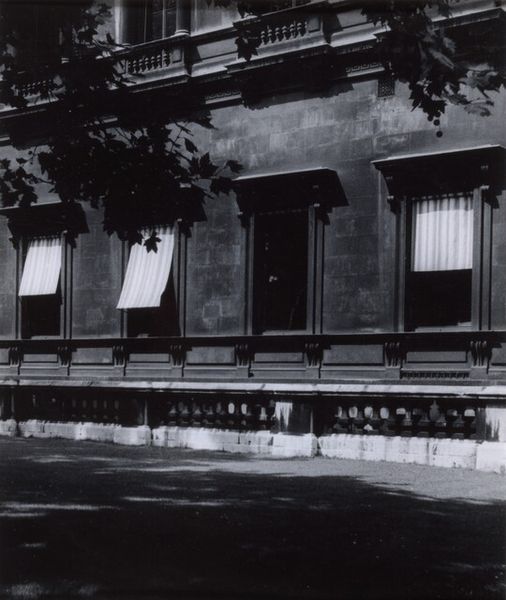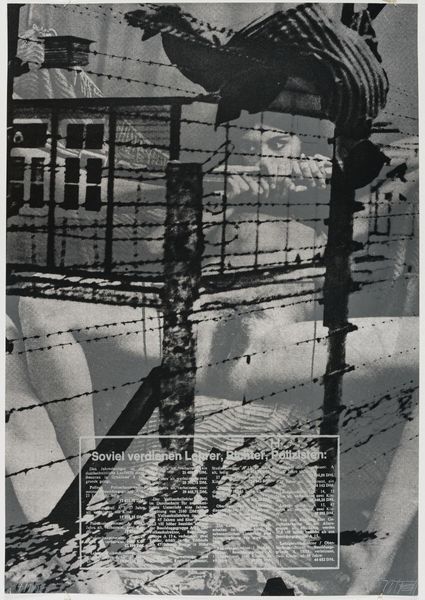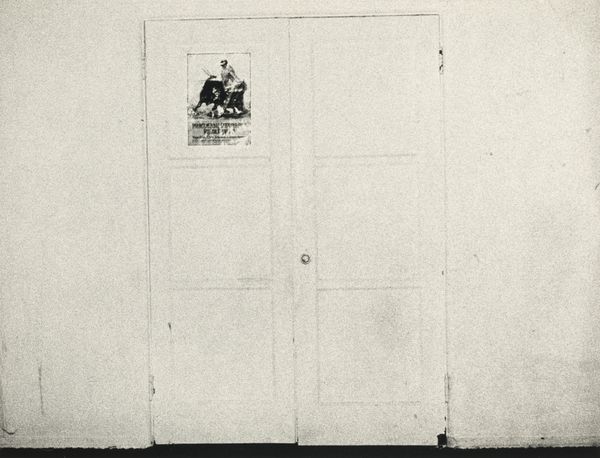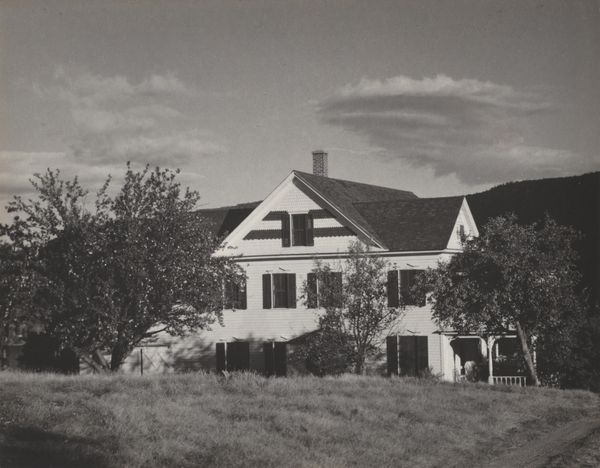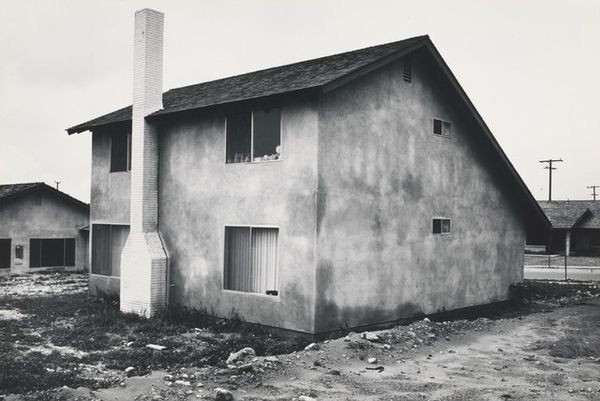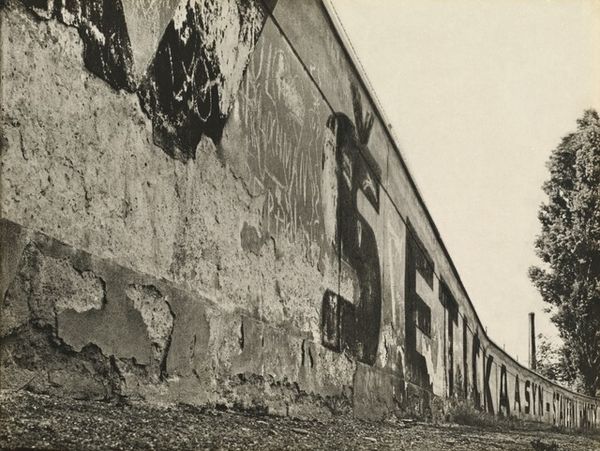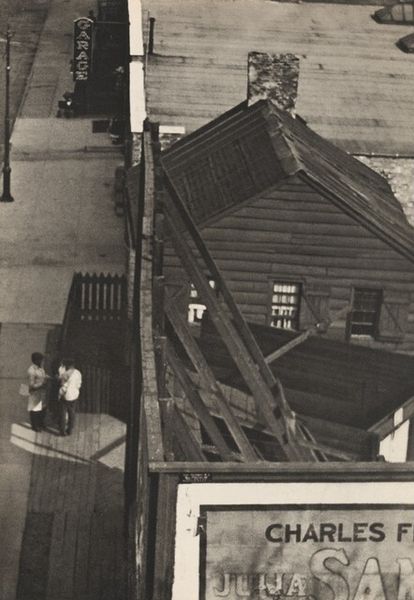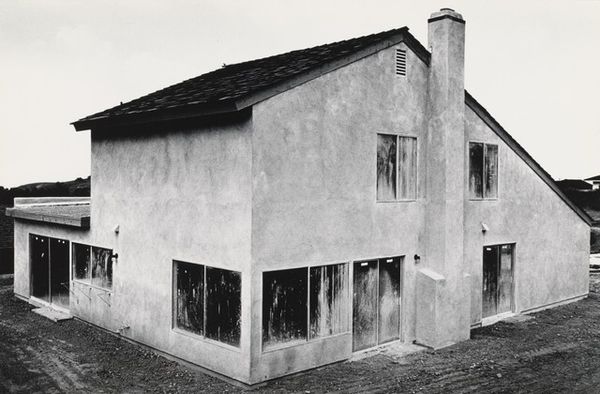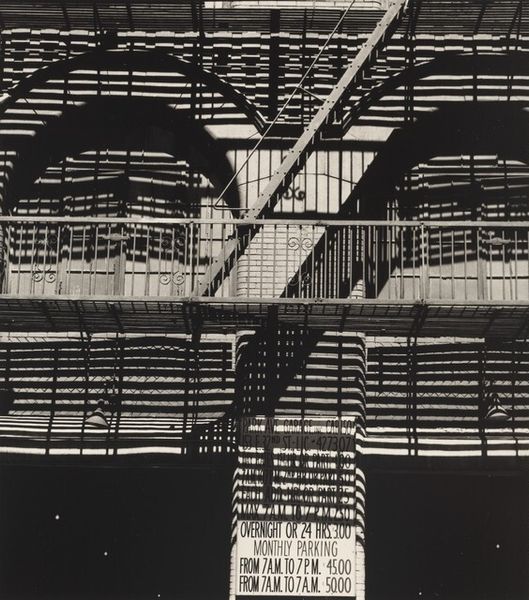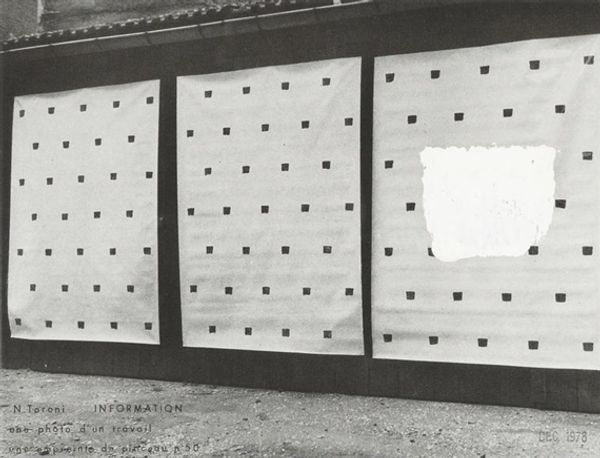
photography, gelatin-silver-print
#
landscape
#
historic architecture
#
photography
#
gelatin-silver-print
#
united-states
#
modernism
#
realism
Dimensions: 6 3/4 x 8 11/16 in. (17.1 x 22.1 cm) (image)
Copyright: No Copyright - United States
Curator: Paul Strand’s gelatin-silver print, simply titled "Photograph," from 1917, presents us with a seemingly straightforward scene, yet it vibrates with deeper implications about American life in the early 20th century. Editor: I’m immediately struck by the intense contrast. The stark white fence almost leaps out, creating a very defined barrier against the muted, blurred buildings behind. It's quite striking, even a bit unnerving. Curator: That's a powerful observation. This fence isn't just a quaint detail; it becomes a symbolic representation of division, perhaps even reflecting the socio-political divides during World War I. Strand, through his lens, challenges us to consider who is inside and who is outside. How might notions of nationalism or exclusion be read into such an image at the time of production? Editor: And looking at the fence itself, the repetition of the pointed pickets… it speaks to the industrial production of these commonplace items. You've got the crisp photographic surface which is achieved via very careful and deliberate dark room process and the ready made pickets themselves which, juxtaposed in one photograph, really makes us examine these class boundaries of the period. Curator: Exactly. This connects directly to Strand's project of bringing modernism to photography, examining the relationship between art and the burgeoning industrialized landscape of the United States. We must think too of how photography democratized artmaking – suddenly this high artform was open to everyone, leading to very distinct results. Editor: So, even in what appears to be a very mundane, straightforward landscape shot, Strand draws our attention to the textures, materials, and structures that shaped everyday experiences, suggesting that even the humblest fence can bear witness to profound historical transformations. Curator: Absolutely, seeing art as inherently connected to history and identity reveals how photographic vision itself constructs a viewpoint steeped in specific perspectives and power dynamics. Strand’s seemingly simple photograph becomes a visual discourse, urging viewers to see art within the intersections of politics and experience. Editor: It encourages me to re-examine our environment with a keener sense for how materials and production methods are so embedded in the making of culture. Thanks for sharing that illuminating view!
Comments
No comments
Be the first to comment and join the conversation on the ultimate creative platform.
